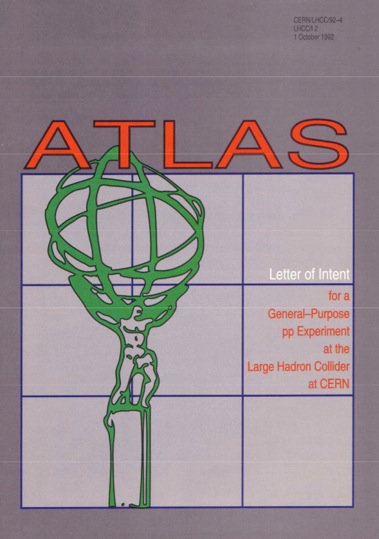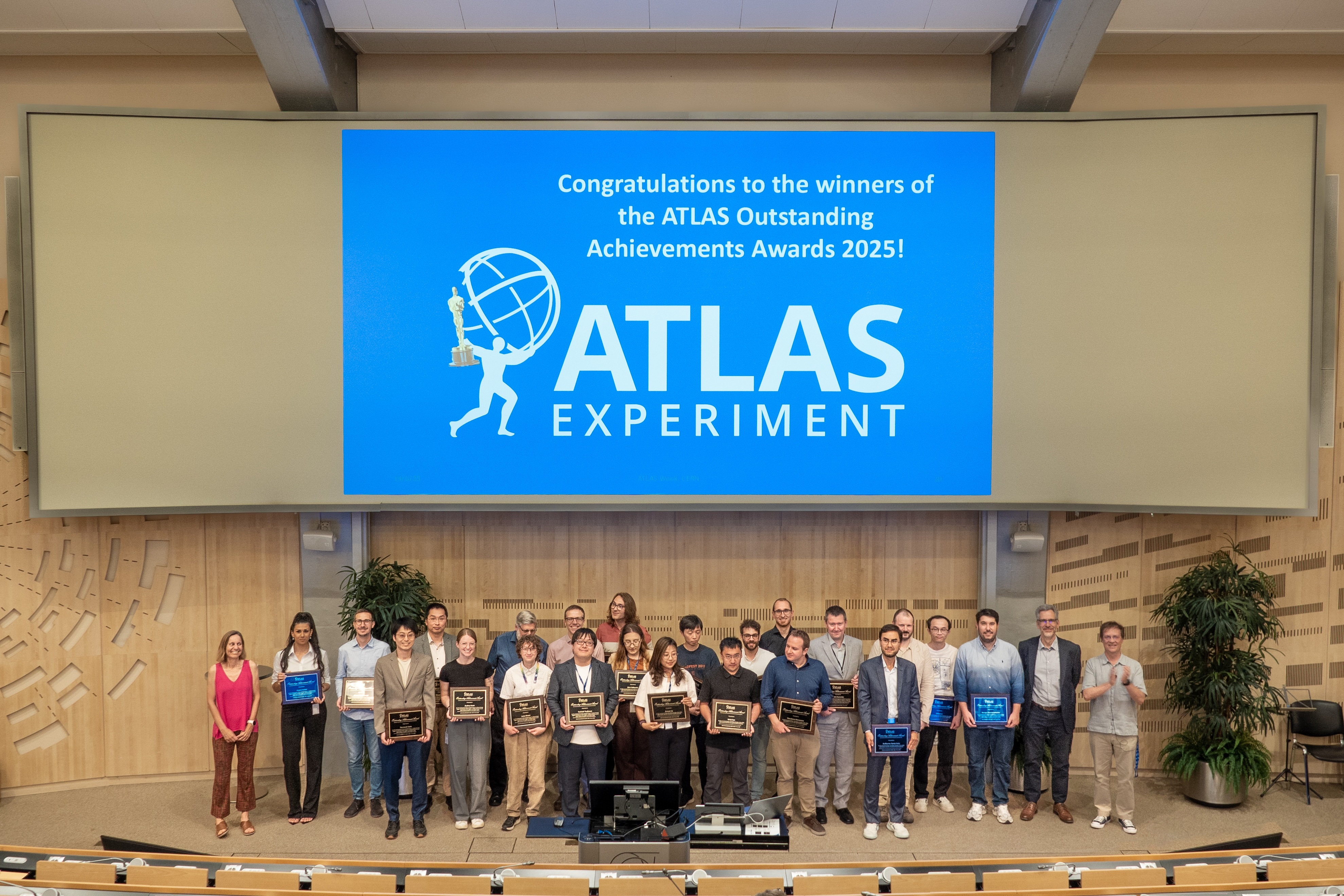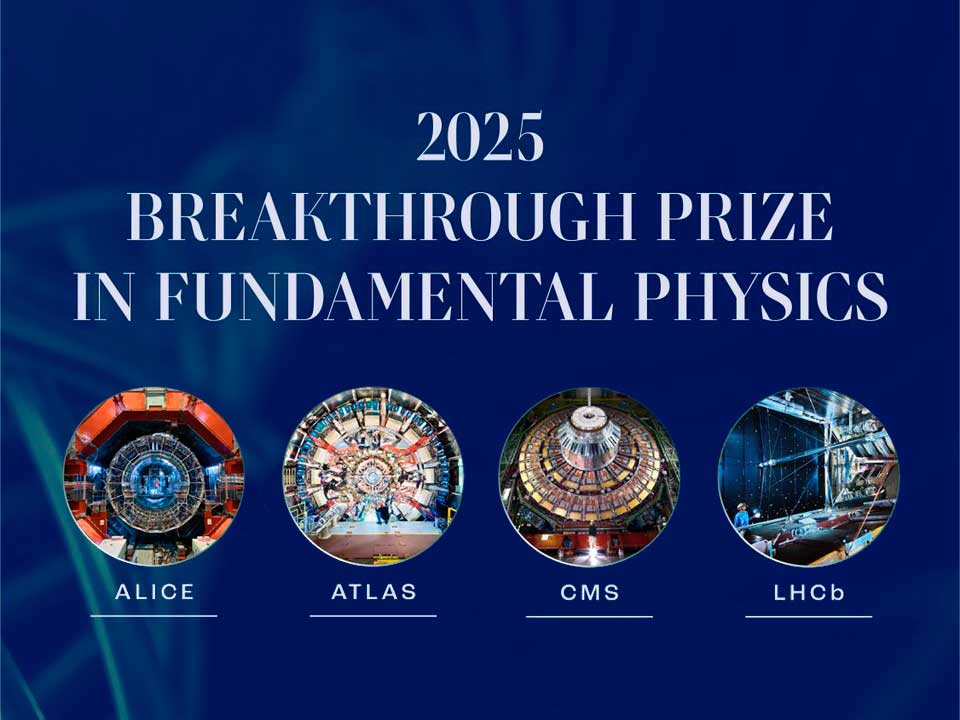Happy Birthday ATLAS!
29 September 2012 | By

Twenty years ago the name “ATLAS” was first used on an official document, the Letter of Intent, to refer to the detector which has been taking data for nigh on three years now, including those data on which the recent Higgs results were based. It has been two decades of growth, development and hard work, resulting in this year’s observation of a Higgs-like particle. All the more reason for the experiment to take a few moments to look back and celebrate.

Back in summer 1992, a collaboration of 88 institutions and an author list with about 850 names already existed, but it had no name. In true collaboration style, a competition was announced, with a prize of two bottles of champagne for the winning entry. More than 50 suggestions were submitted. After a first round of deliberations by what was effectively a proto-Collaboration Board, only the names “ATLAS” and “ALICE” were left in the running. On 9 September 1992, a suggestion submitted by Karl Jakobs, at the time with the MPI Munich group, was awarded the prize.
Once the name had been decided and inaugurated on the Letter of Intent (LoI), technical and physics work could continue in earnest. Submitted on 1 October 1992 (being considered the birthdate of the collaboration), the Letter of Intent was a 108-page document which made the physics case for a general purpose proton-proton experiment at the LHC and described the science and technology of the detector that would be needed to achieve the physics goals set out. Once it was endorsed, a Technical Proposal (TP) was developed and submitted in December 1994. It took a year of negotiations on performance issues and costs with the LHCC (LHC Experiments Committee) to get the Technical Proposal approved.
By this time the collaboration had grown to 147 institutions and about 1550 authors. Their next task in the development of the detector was to produce a Technical Design Report (TDR) for each subcomponent. This resulted in an impressive collection of nearly 20 books, some running to two volumes, and each containing proposals to use cutting-edge technology to push capabilities in discovery mode.
In July 1997, formal construction approval for ATLAS was given by CERN’s Director General, starting with the calorimeters. More than ten years of construction work followed, first at the participating institutions, and then assembly of the component parts of the detector in situ in the ATLAS pit. The final product, weighing about 7,000 tonnes and 45 by 25 meters in size, saw its first beam on 10 September 2008.
In its first 20 years, ATLAS has made some remarkable achievements, pushing technology and human ingenuity to the limits.
In less than three years of operation, it has already met one of its main design aims by finding a new boson consistent with the Higgs. In the process it has proved itself capable of dealing successfully with more difficult conditions than it was designed for. With the expected increase of the LHC energy to its full design value after the first Long Shutdown planned for 2013-14, and preparations in full swing for upgrades to cope with the future luminosity increases over the coming decade, there are exciting times ahead.
So congratulations to ATLAS and the thousands of physicists, engineers, students and others whose hard work has made the experiment’s remarkable feats possible and whose dedication has turned a mere group of scientists into a real collaboration. Happy Birthday ATLAS!



